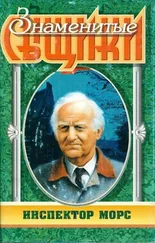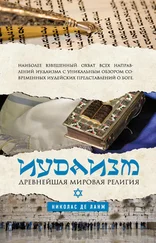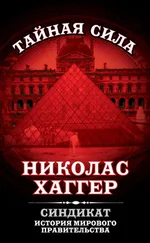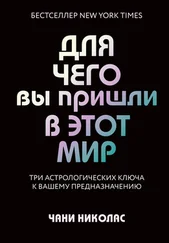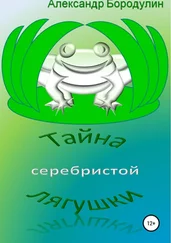32. Dutcher W. (1902), Results of special protection to gulls and terns obtained through the Thayer fund, Auk,, 19, 34-63.
33. Dutcher W. (1904), Report of the A. O. U. Committee on the protection of North American birds the year 1903, Auk, 21, 97-208.
34. van Eck P. J. (1939), Farbensehen und Zapfenfunktion bei der Singdrossel, Turdus e. ericetorum Turton, Arch, neerl. Zool., 3.
35. Edwards G., Hosking E., Smith S. (1948), Aggressive display of the Oystercatcher, Brit. Birds, 41, 236-243.
36. Elliott H. F. I., Moreau R. E. (1947), Start of incubation by Herring Gull, Brit. Birds, 40, 286.
37. Farner D. S. (1945), The return of robins to their birthplaces, Bird Banding, 16, 81-99.
38. Fisher J. (1952), The Fulmar, London, Collins, New Nat.
39. Geуrvon Schweppenburg H. (1938), Zur Systematik der Juscus-argentatus MSwen. Orn., 86, 345-365.
40. Gоеthe F. (1937), Beobachtungen und Untersuchungen zur Biologie der SUbermowe auf der Vogelinsel Memmertsand, J. Orn., 85, 1-119.
41. Goethe F. (1939), Ueber das "Anstoss-Nehmen" bei Vogeln, Z. Tierpsychol., 3, 371-387.
42. Griffin D. R. (1943), Homing experiments with Herring Gulls and Common Terns, Bird Banding, 14, 7-33.
43. Griffin D. R. (1944), The sensory basis of bird navigation Quart. Rev. Biol,, 19, 15-31.
44. Grohmann J. (1939), Modifikation oder Funktionsreifung, Z. Tierpsychol., 2, 132-144.
45. Gress A. 0. (1940), The migration of Kent Island Herring Gulls, Bird Banding, 11, 129-155.
46. Gress A. 0. (1951), The Herring Gull-Cormorant control project Proc. X. Int. Orn. Congr. Uppsala, 1950, 532-536.
47. von Haartman L. (1949), Der Trauerfliegenschniipper. I. Ortstreue und Rassenbildung, Ach. Zool. Fenn., 56, 1-104.
48. Harber D. D., Johns M. (1947), Great Blackbacked Gull dropping Rat, Brit. Birds, 40, 417.
49. Haviland M. D. (1915), Feeding habit of the Blackheaded Gull, Brit. Birds, 9, 72-73.
50. Hazelwood A. (1949), Agile Flight manoeuvre of Herring-Gull, Brit. Birds, 42, 159.
51. Heinroth 0. (1911), Beitriige zur Biologic, namentlich Ethologieund Psychologie der Anatiden, Verh., 5, Int. Orn. Kongr. Berlin, 1910, 589-702.
52. Heinroth O., Heinroth M. (1928), Die Vogel Mitteleuropas, Berlin, Bermuhler.
53. Heinroth 0., Heinroth M. (1941), Das Heimfinde-Vermogen der Brieftaube, J. Orn., 89, 213-257.
54. von Hoist E. (1950), Die Arbeitsweise des Statolithenapparates bei Fischen, Z. vergl. Physiol., 32, 60-120.
55. Howard II. E. (1929), An introduction to the study of bird behaviour, Cambridge University Press.
56. Howard II. E. (1935), Territory and food, Brit. Birds, 28, 285-287.
57. Huxley J. S. (1914), The courtship habits of the Great Crested Grebe (Podiceps cristatus); with an addition to the theory of sexual selection, Proc. Zool. Soc. Lond., 1914, 491-562.
58. Huxley J. S. (1923), Courtship activities in the Redthroated Diver (Colymbus stellatus Pontopp.); together with a discussion on the evolution of courtship in birds, Linn. Soc. Zool., 35, 253-292.
59. Huxley J. S. (1934), A natural experiment on the territorial instinct. Brit. Birds, 27, 270-277.
60. Ising G. (1945), Die physikalische Moglichkeit eines tierischen Orientierungssinncs auf Basis der Erdrotation, Ark. Mat. Astr. Fysik, 32A, 1-23.
61. Kendeigh S. C. (1941), Territorial and mating behaviour of the House Wren, III. Biol. Monogr., 18, 1-120.
G2. Кirkman F. B. (1937), Bird behaviour, London and Edinburgh, Nelson.
63. Кое hie r O., Zagarus A. (1937), Beitriige zum Brutverhalten des Halsbandregenpfeifers (Charadrius h. hiaticula L.), Beitr. Fortpfl.- biol. Vog., 13, 1-9.
64. Kortlandt A. (1940), Eine Uebersicht der angeborenen Verhaltungsweisen des Mitteleuropalschen Kormorans (Phalacrocorax carbo sinensis Shaw and Nodd.); ihre Funktion, ontogenetische Entwicklung und phylogenetische Hcrkunft, Arch, neerl. Zool., 4, 401-402.
65. Коrtlan dt A. (1940), Wechselwirkung zwischen Instinkten, Arch, neerl. Zool, 4, 442-520.
66. Kramer G. (1949), Ueber Richtungstendenzen bei der nachtlichen Zugunruhe gekafigter Vogel, В кн.: Ornithologie als biologische Wissenschaft (Festschrift E. Stresemann), 269-283.
67. Kramer G. (1952), Experiments on bird orientation, Ibis, 94, 265-285.
68. Kratzig H. (1940), Untersuchungen zur Lebensweise des Moorschneehuhns, Lagopus I. lagopus, wahrend der Jugendentwicklung, J. От., 88, 139-166.
69. Kuhn A. (1927), Ueber den Farbensinn der Bienen, Z. vergl. Physiol, 5, 762-801.
70. Lack D. (1939), The display of the Blackcock, Brit. Birds, 32, 290-303.
71. Lack D. (1940), Pair formation in birds, Condor, 42, 269-286.
72. Lack D. (1940), Courtship feeding in birds, Auk, 57, 169-179.
73. Lack D. (1943), The life of the Robin, London. Witherbv.
74. Lack D., Lockley R. M. (1938), Skokholm Bird Observatory homing experiments I, Brit. Birds, 31.
75. Lockley R. M. (1937), Blackbacked and Herring Gulls and Ravens feeding on ants, Brit. Birds, 30, 325-326.
76. Lorenz K. (1931), Beitrage zur Ethologie sozialer Corviden, J. От., 79, 67-120.
77. Lorenz K. (1935), Der Kumpan in der Umwelt des Vogels, I. От., 83, 137-213, 289-413.
78. Lorenz K. (1941), Vergleichende Bewegungsstudien an Anatinen, От., 89, 194-294.
79. Lorenz K. (1943), Die angeborenen Formen moglicher Erfahrung, Z. Tierpsychol, 5. 235-409.
80. Makkink G. F. (1931), Die Kopulation der Brandente (Tadorna tadoma L.), Ardea, 20, 18-22.
81. Meinertzhagen R. (1935), The races of Larus argentatus and Larus fuscus with special reference to Herr B. Stegmanns recent paper on the subject, Ibis (13), 5, 762-773.
82. Meisenheimer J. (1921), Geschlecht und Geschlechter im Tierreich, Jena.
83. Meyknecht J. (1940), Farbensehen und Helligkeitsunter-scheidung beim Steinkauz (Athene noctua vidalii A. E. Brehm), Ardea, 30, 129-174.
84. Moreau R. E. (1923), Herring Gull eating its own chick, Brit. Birds, 16, 221-222.
85. Nice M. M. (1937), Studies in the Life History of the Song Sparrow. I, Trans. Linn. Soc, N. Y., 4.
86. Noble G. K., Vogt W. (1935), An experimental study of sex recognition in birds, Auk, 52, 278-286.
87. Noble G. K, Wurm M. (1943), The social behaviour of the Laughing Gull, Ann. N. Y. Acad. Set, 45, 179-220.
88. Oldham С (1930), The shellsmashing habit of gulls, Ibis (12), 6, 239-244. 89. Pirenne M. H., Crombie A. C. (1944), White plumage of sea-birds, Nature, 153, 526-527.
90. Portielje A. F. J. (1921), Zur Ethologie bzw. Psychologic von Botaurus stellaris, Ardea, 15, 1-15.
91. Portielje A. F. J. (1928), Zur Ethologie bzw. Psychologie dor Silbermowe, Larus a. argentatus Pontopp., Ardea, 17, 112-149.
92. Portielje A. F. J. (1944), Dieren zein en leren kennen, Amsterdam, Nederlandse Keurboekerij, 4th ed.
93. Pumplire у R. J. (1948), The sense organs of birds, Ibis, 90, 171-199.
94. Raber H. (1949), Das Verhalten von gefangenen Waldohreulen (Asia o. otus) und Waldkauzen (Strix a. aluco) zur Beute, Behaviour, 2, 1-96.
95. Rавd A. L. (1942), Larus kumlient and its allies, Ganad. Field-Nat., 56, 123-126.
96. Richdale L. E. (1941), Sexual Behavior in Penguins, Lawrence. University of Kansas Press.
97. Rintoul L. J., Bajcter E. V. (1925), Report on Scottish Ornithology in 1924, Scot. Nat., 1925, 73-88, 109-130.
98. Ruiter C. J. S. (1941), Waarnemingen omtrent de levenswijzo van de Gekraagde Roodstaart, Phoenicurus ph. phoenicurus (L.), Ardea, 30, 175-214.
99. Ruppell W. (1936), Heimfindeversuche mit Staren und Schwalben 1935, J. Orn., 84, 180-198.
100. Ruppell W. (1940), Neue Ergebnisse iiber Heimfinden bcim Habicht, Vogelzug, 11,57-64.
101. Ruppell W. (1944), Versuche iiber Heimfinden ziehender Nebelkriihen nach Verfrachtung, J. Orn., 92, 106-132.
Читать дальше
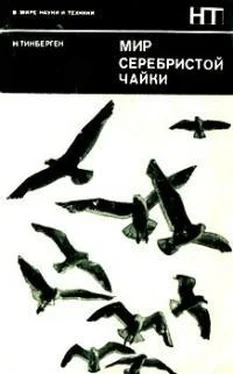

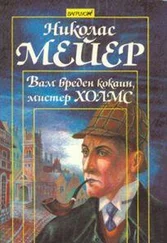
![Тоне Селишкар - Экипаж «Синей чайки» [Повесть]](/books/27483/tone-selishkar-ekipazh-sinej-chajki-povest-thumb.webp)
